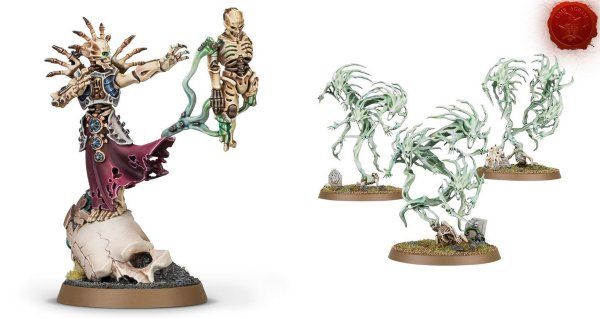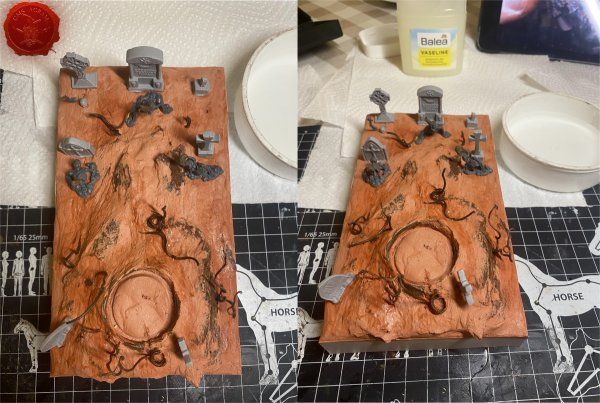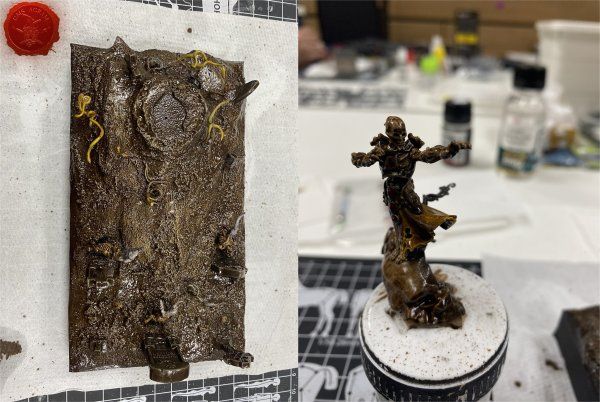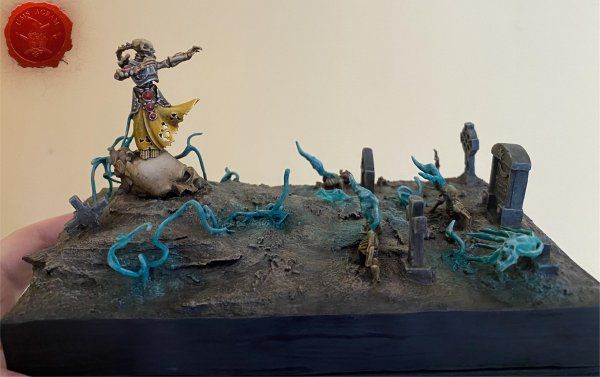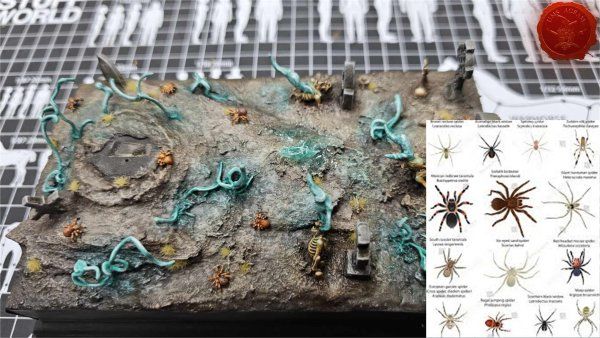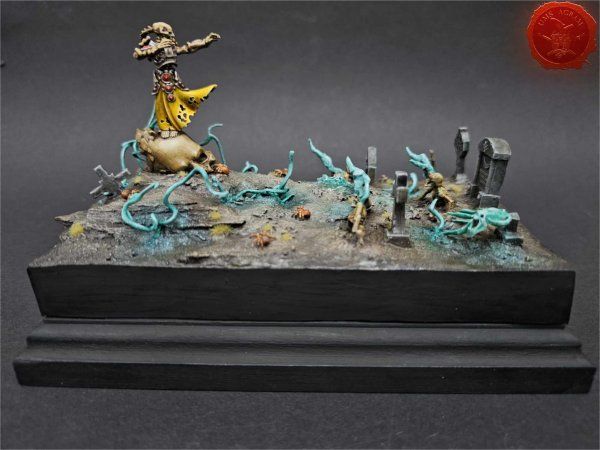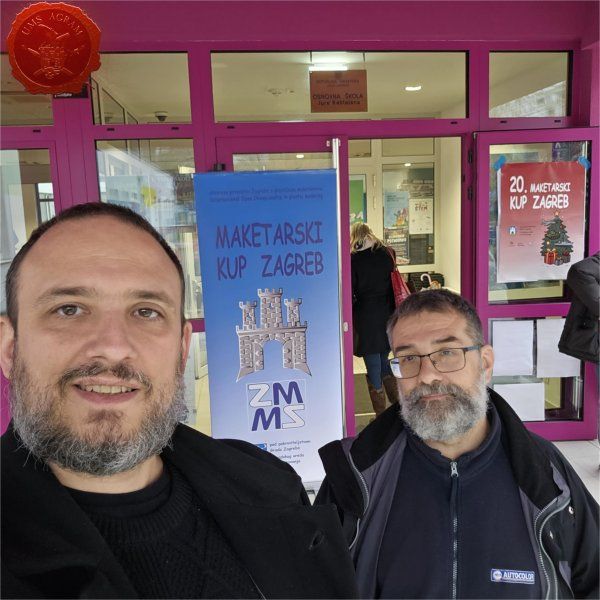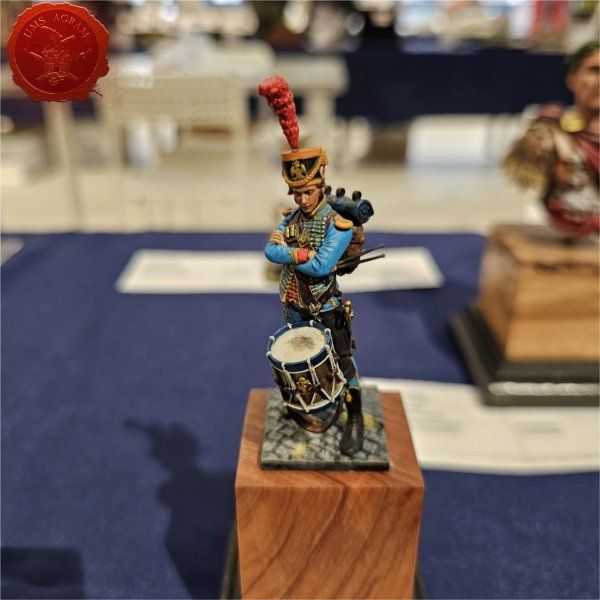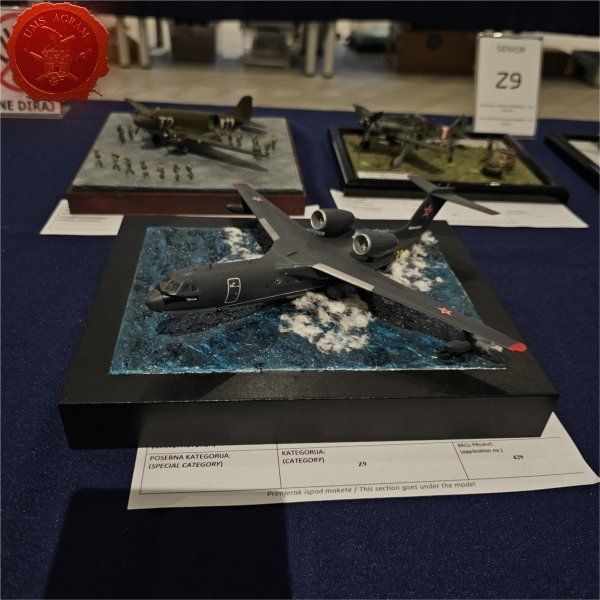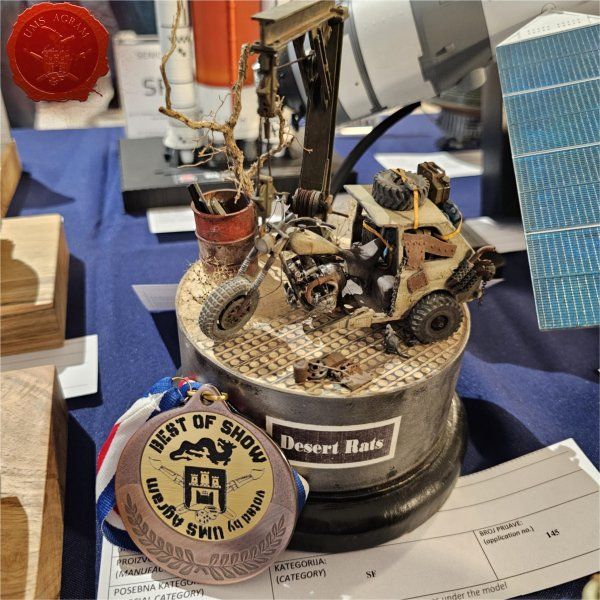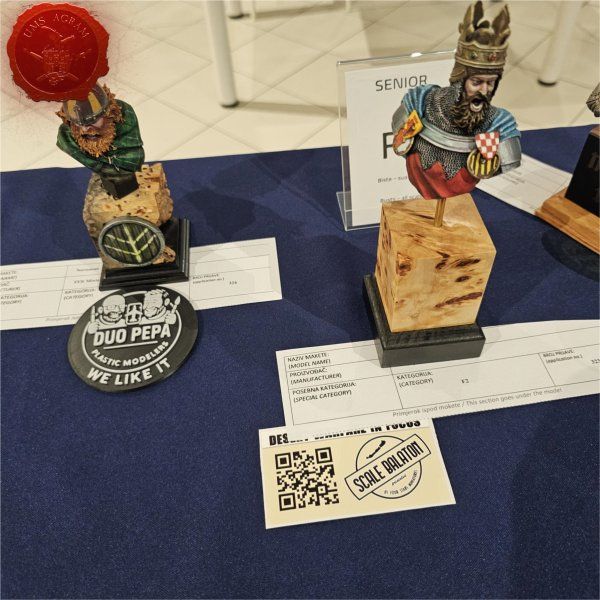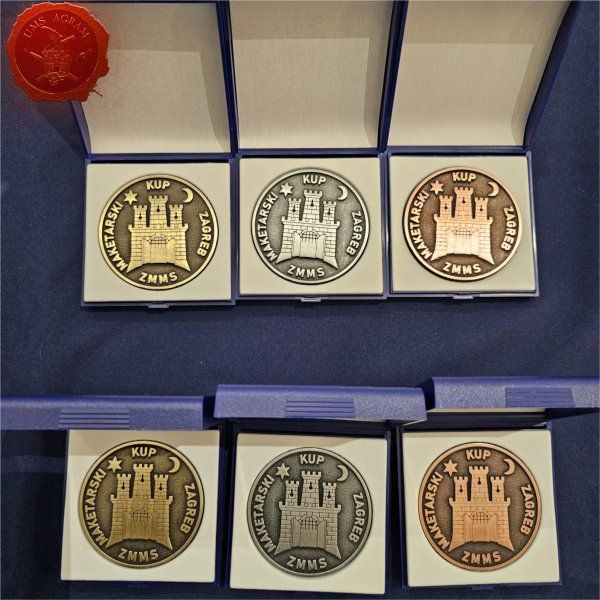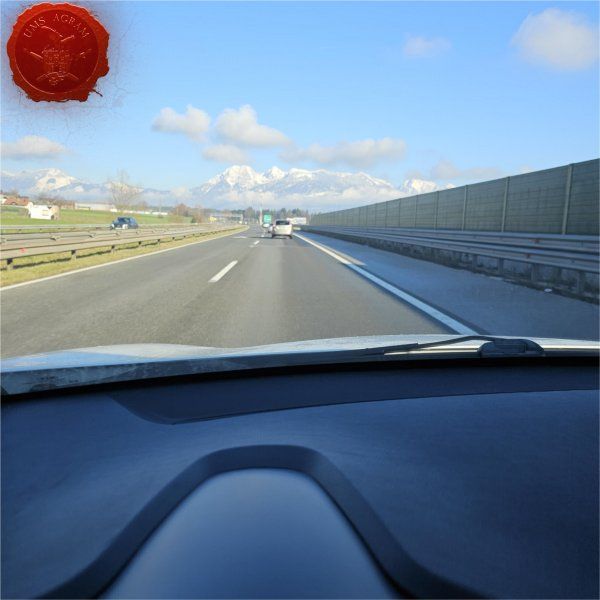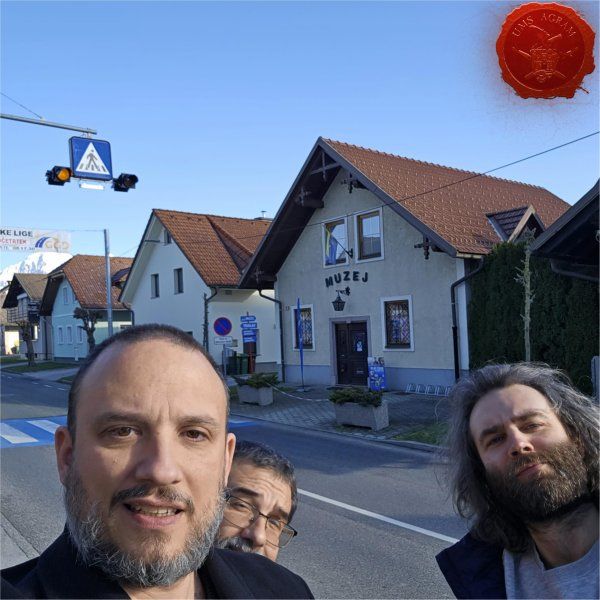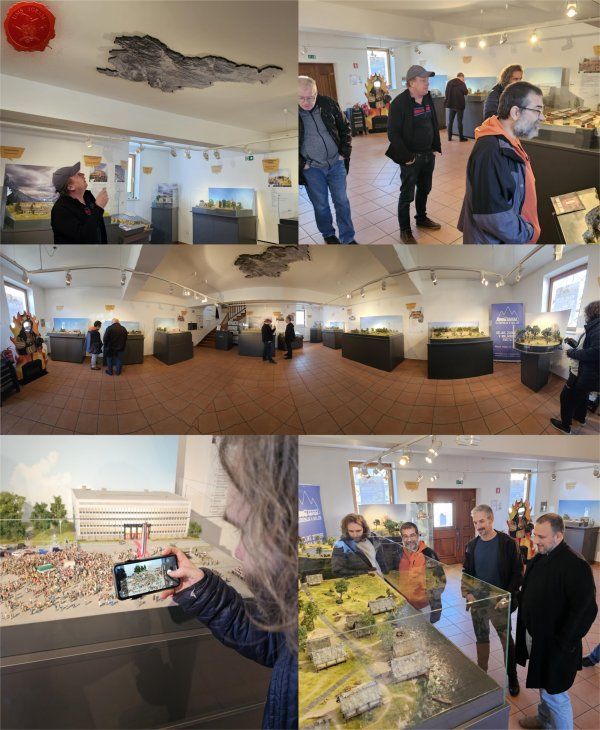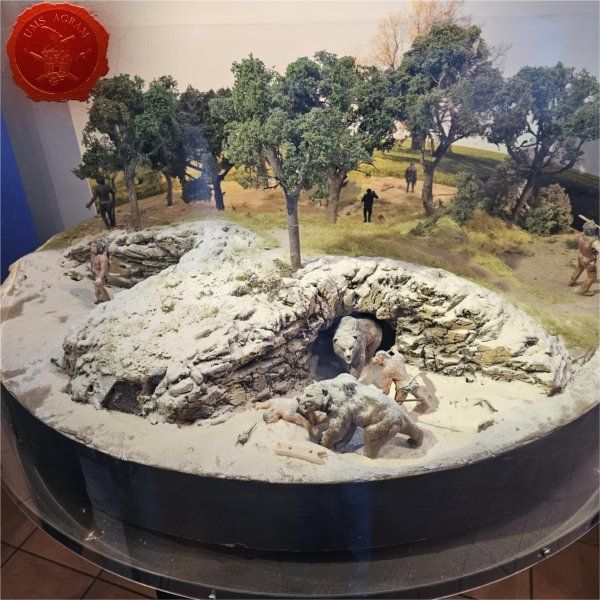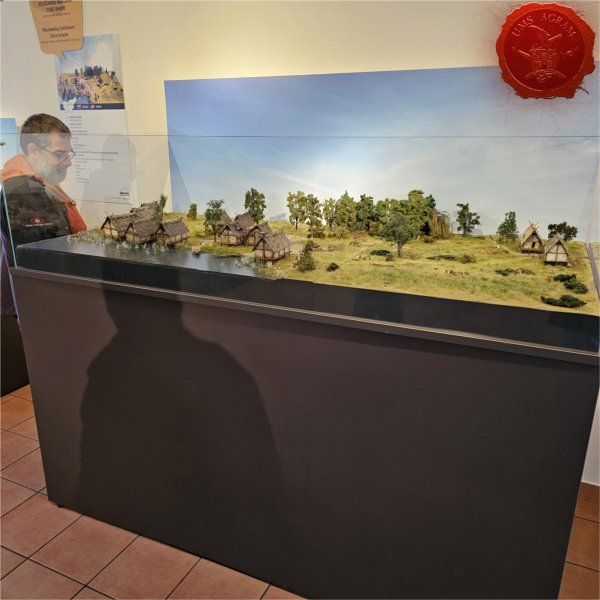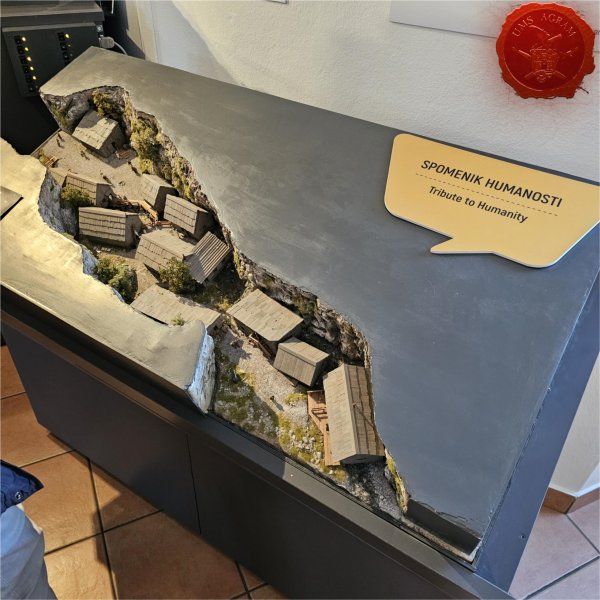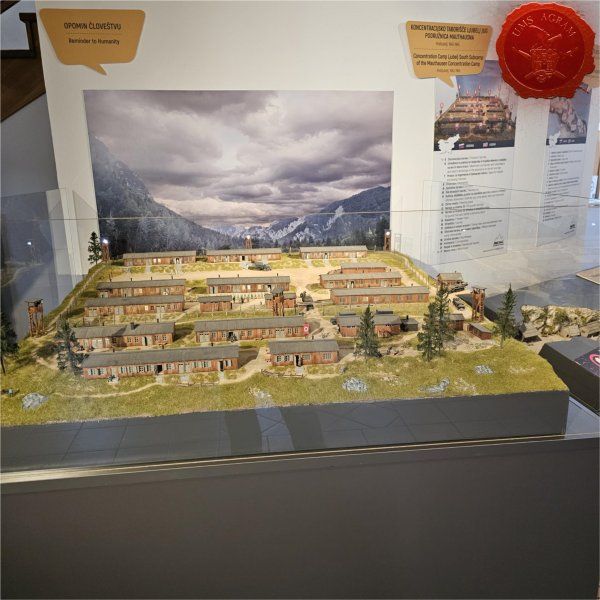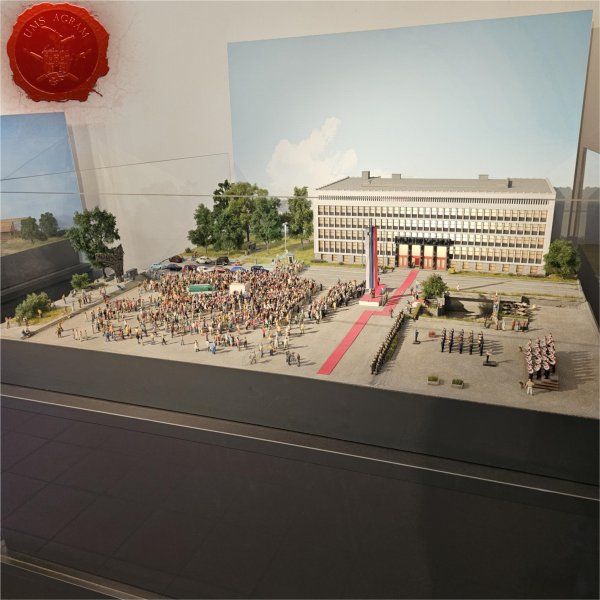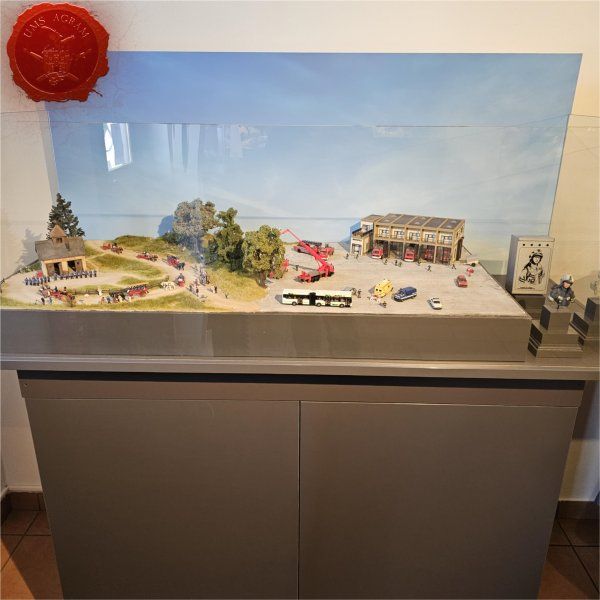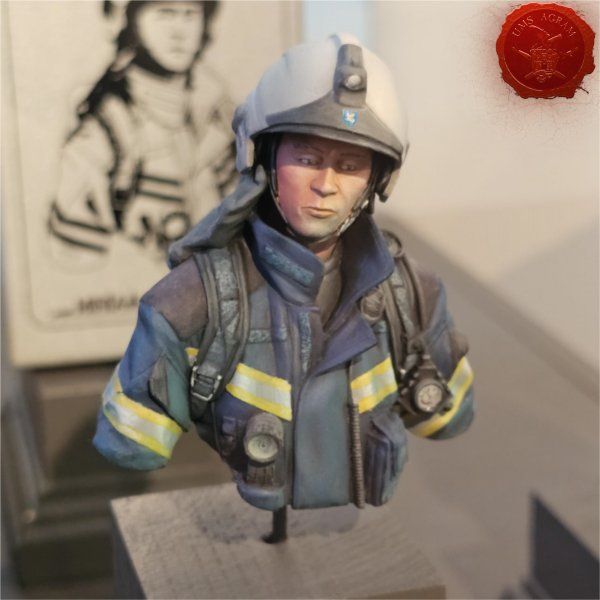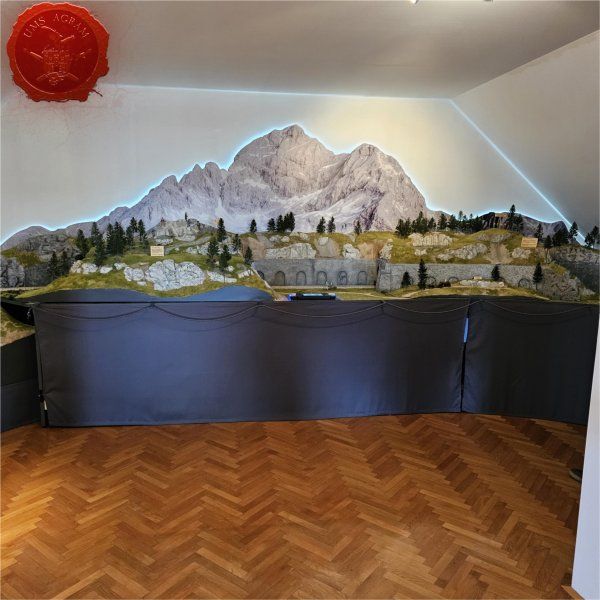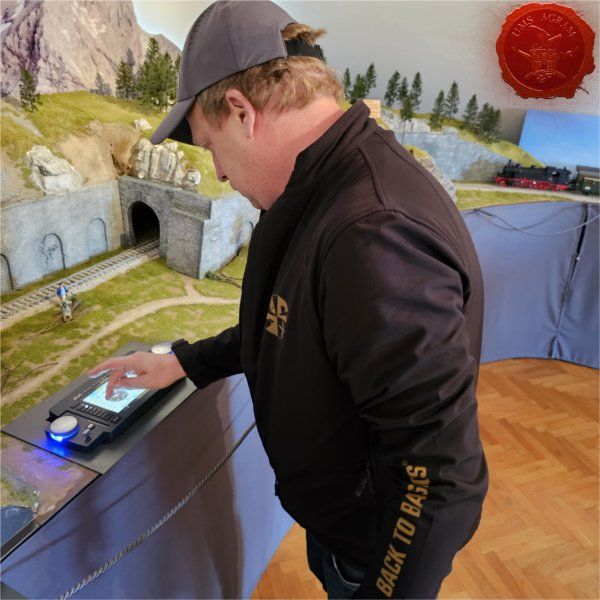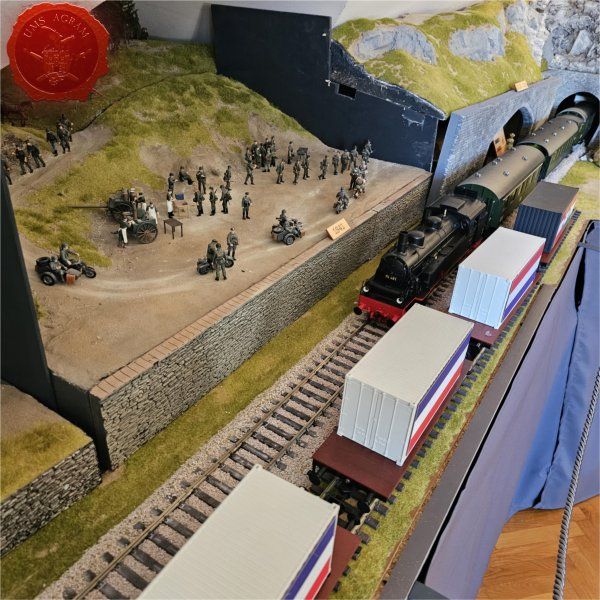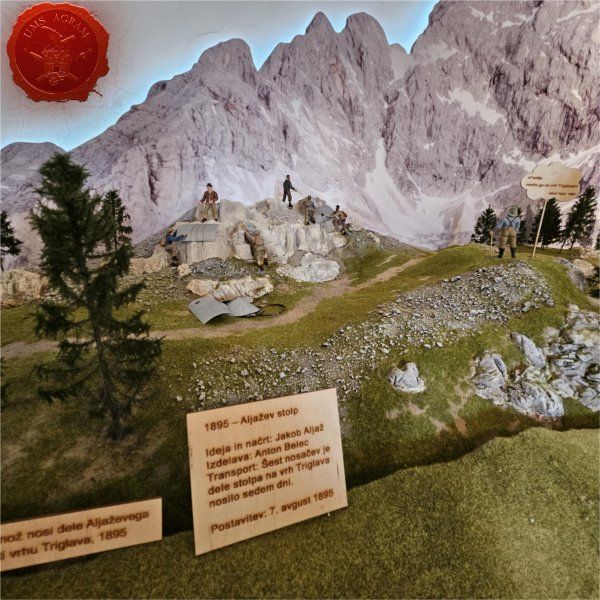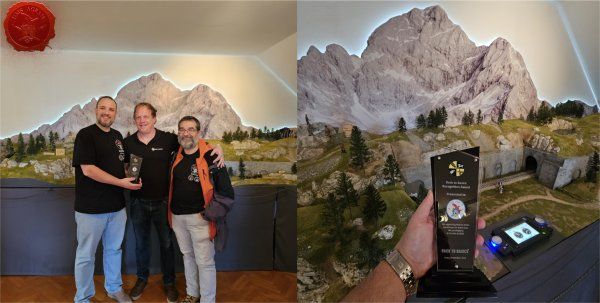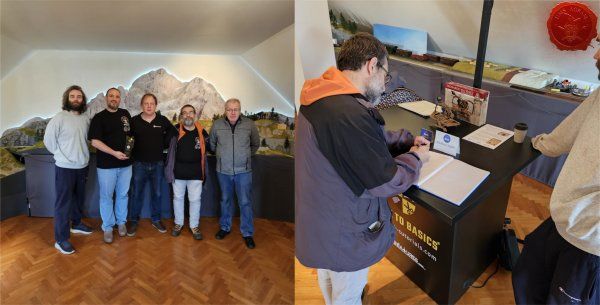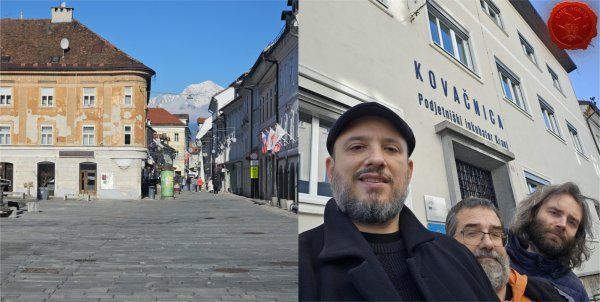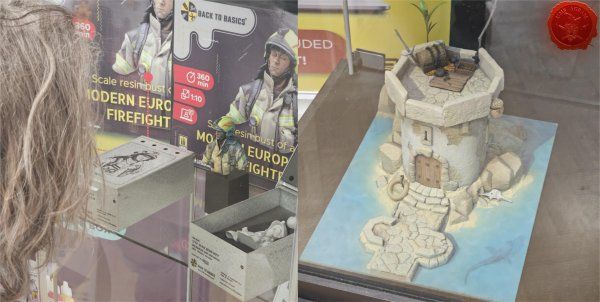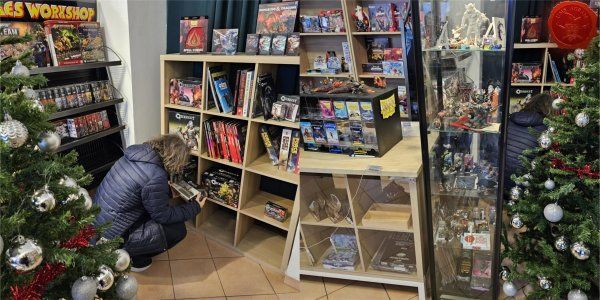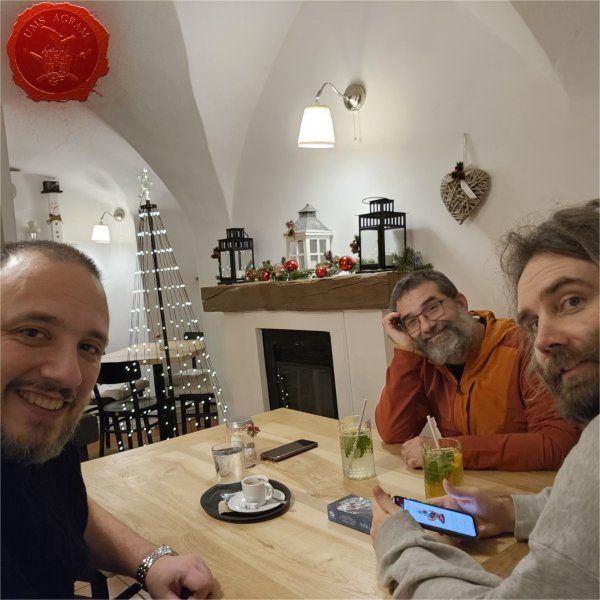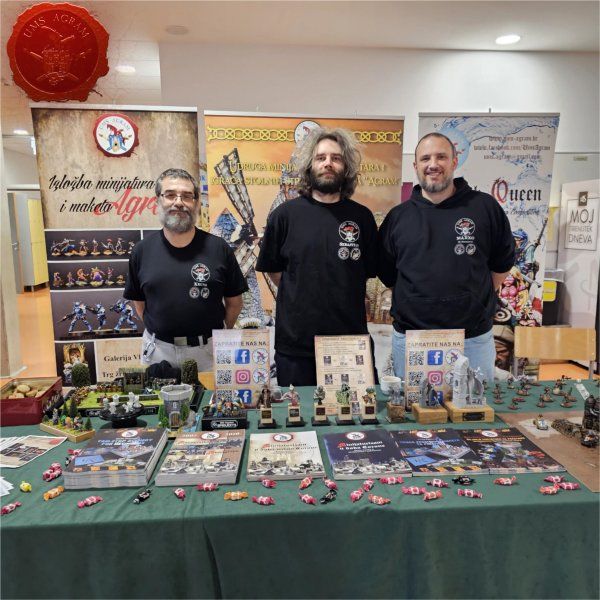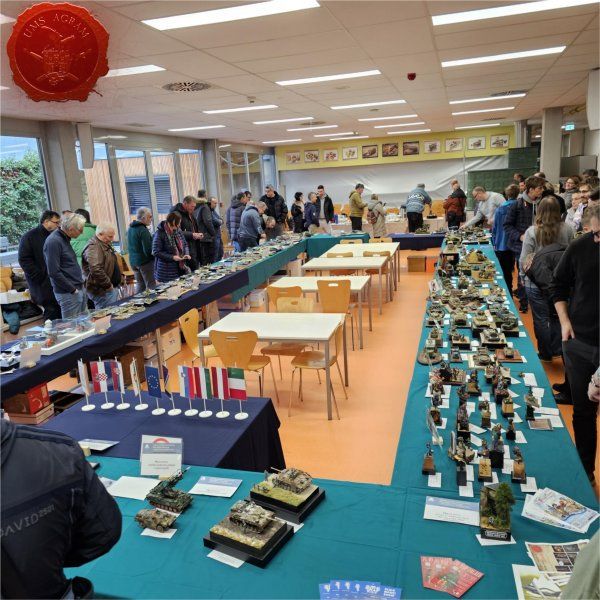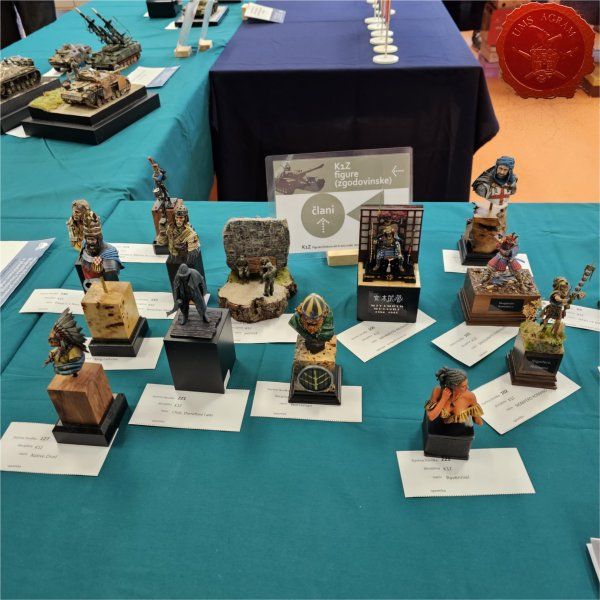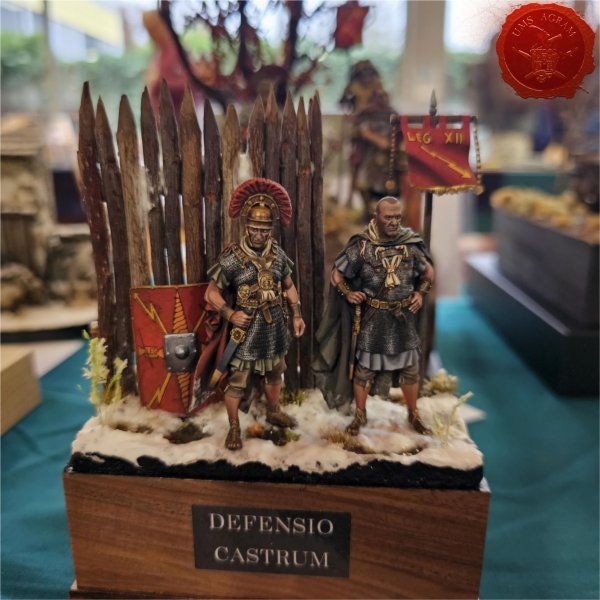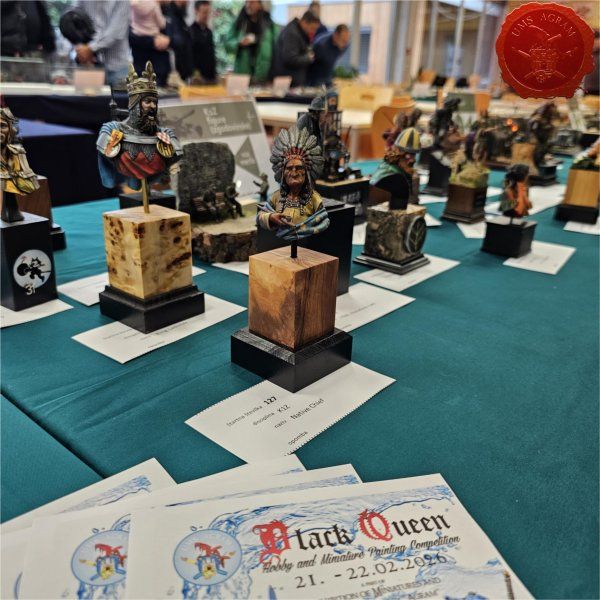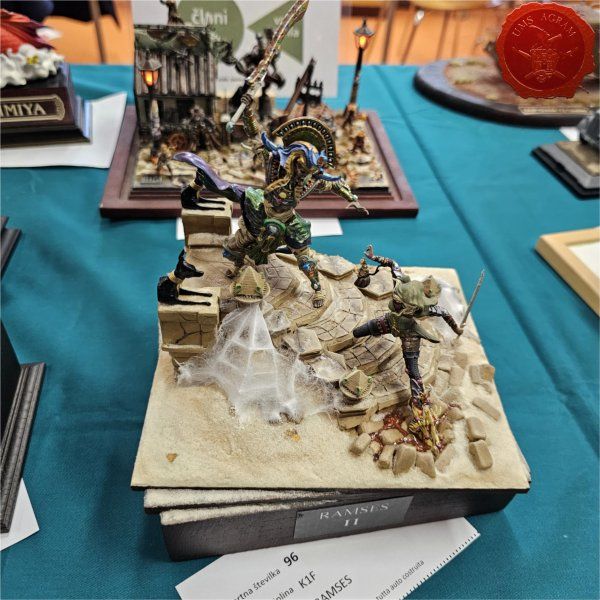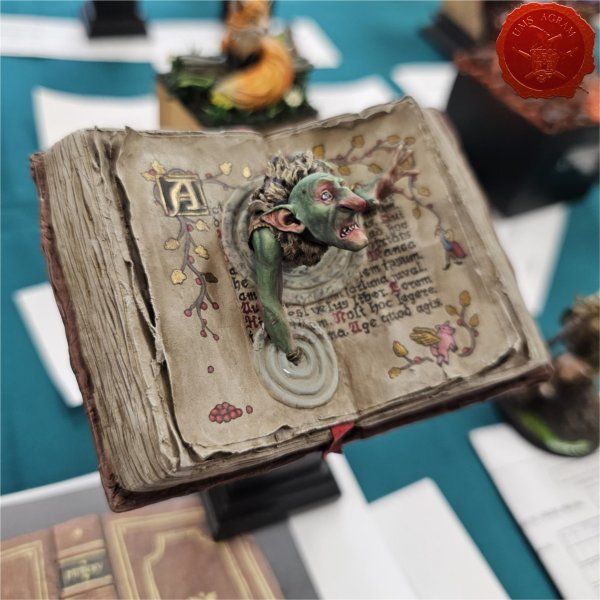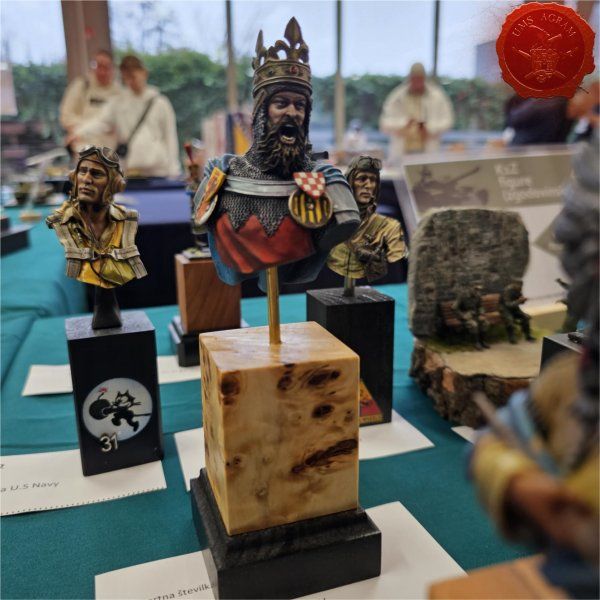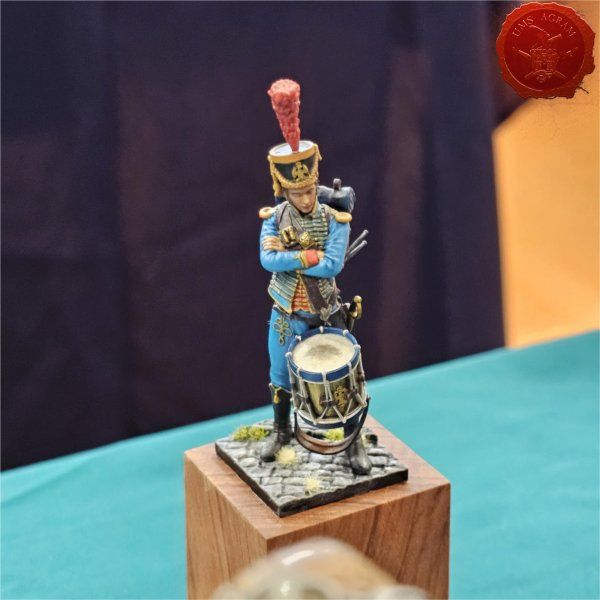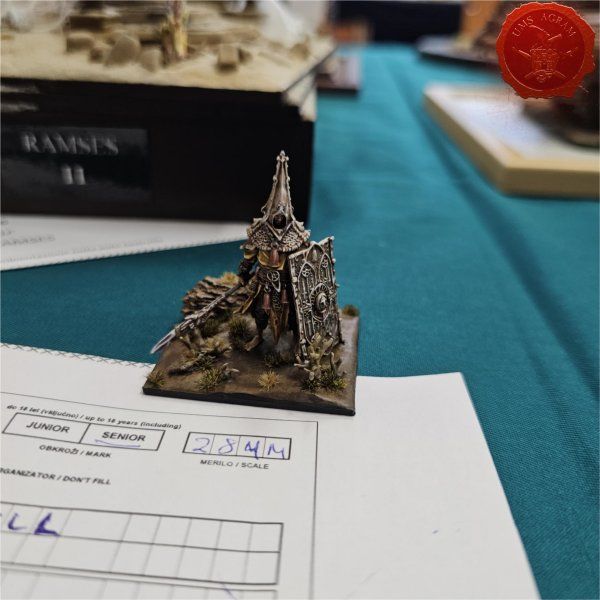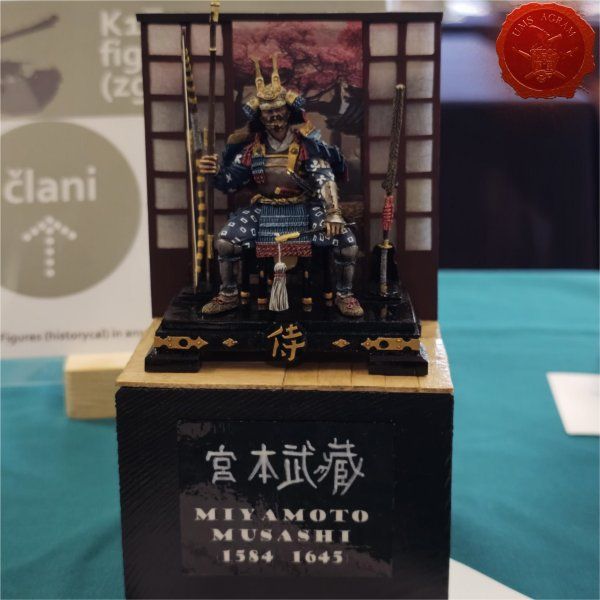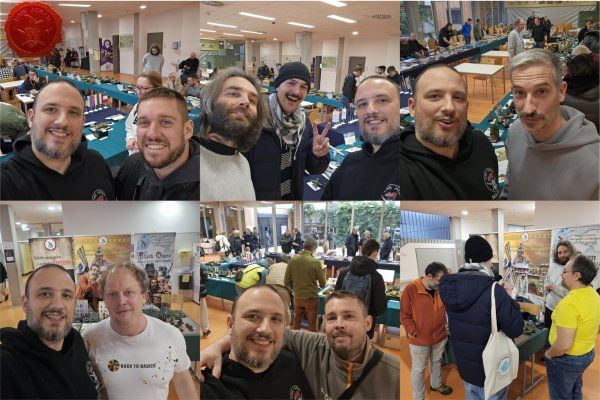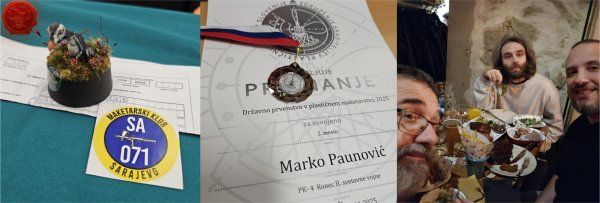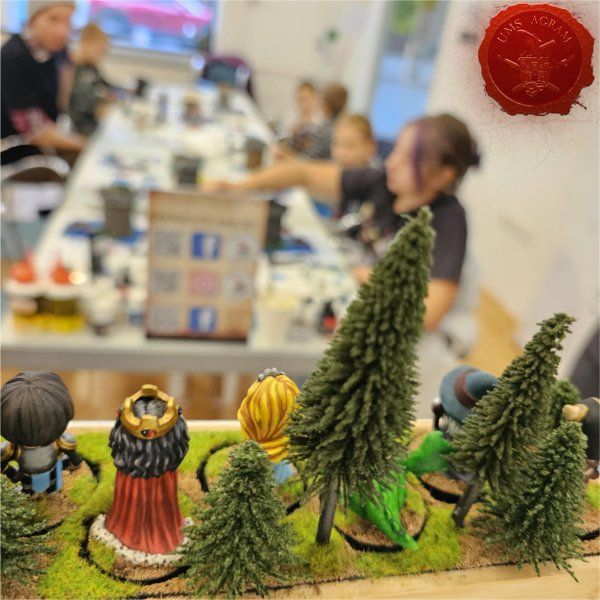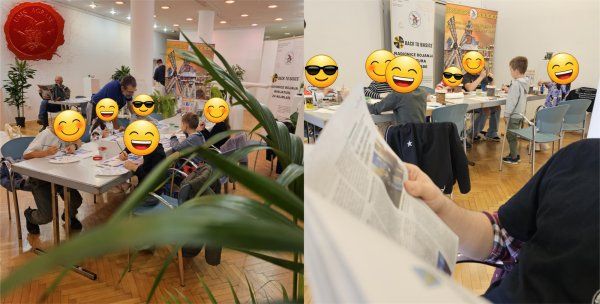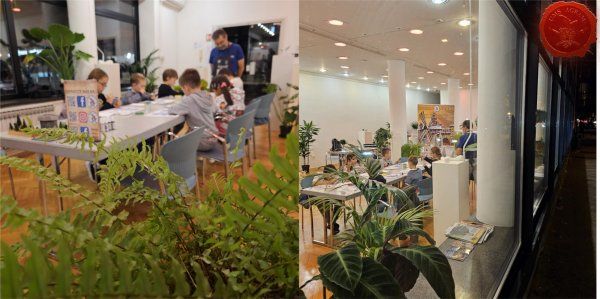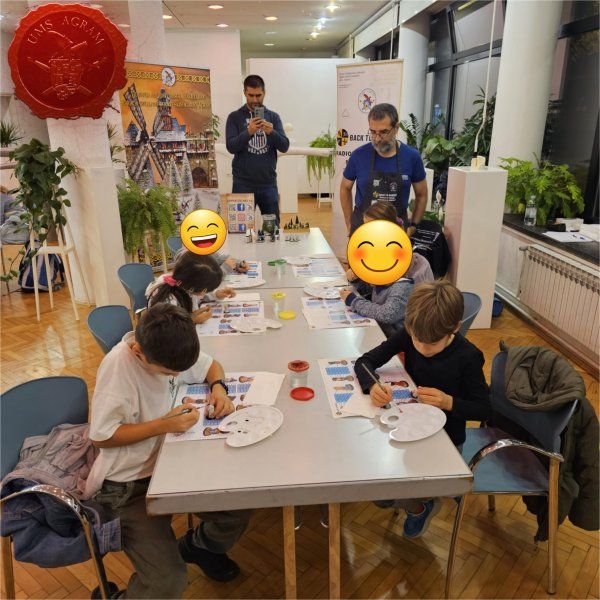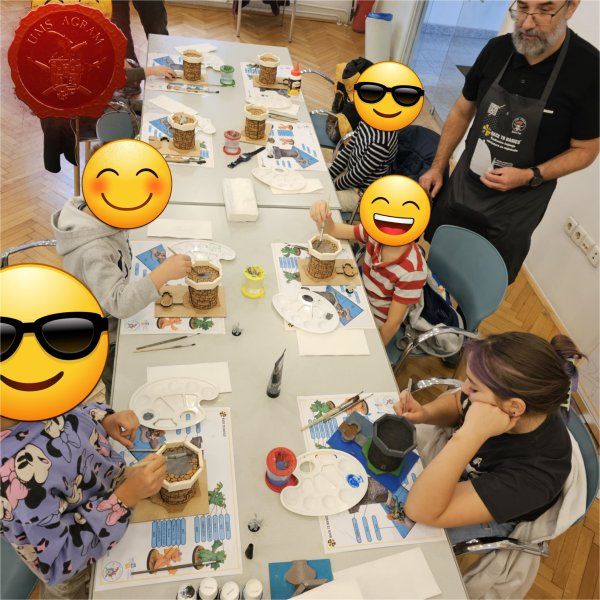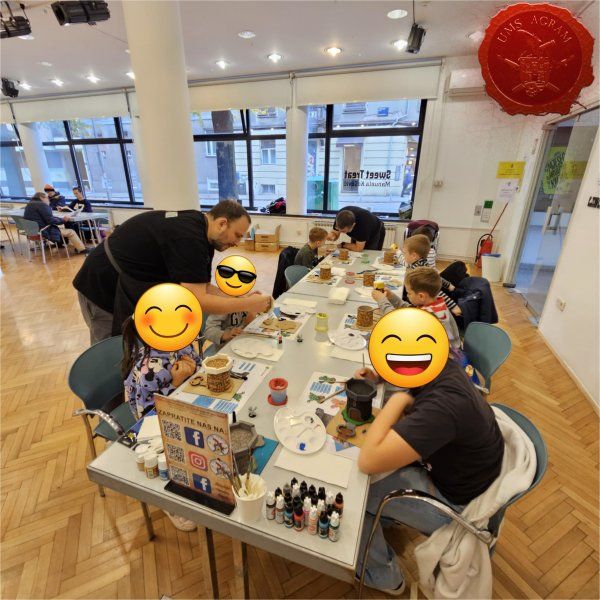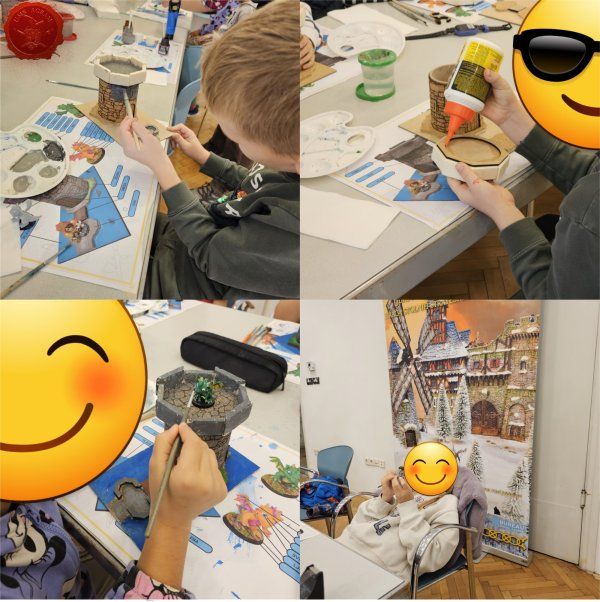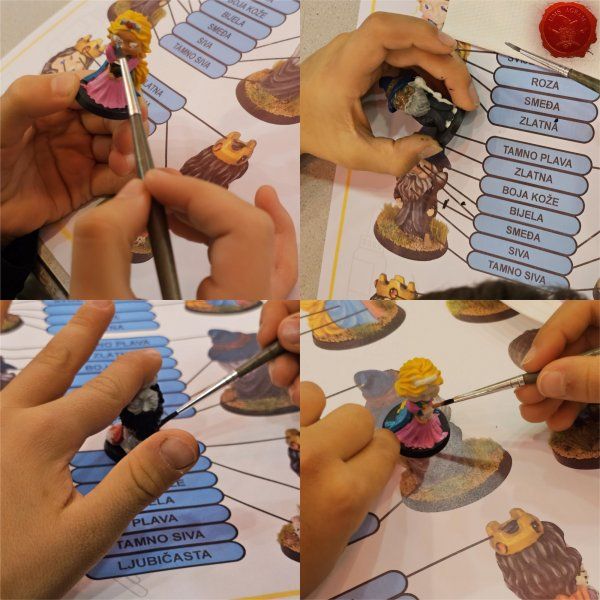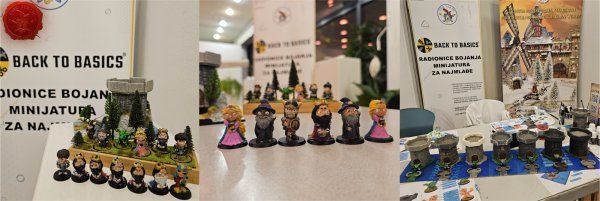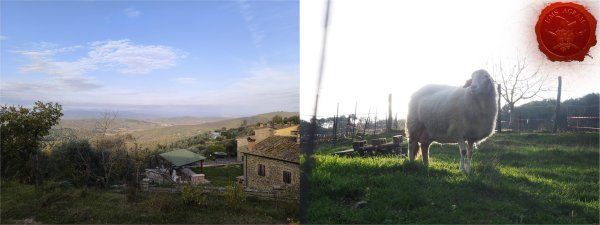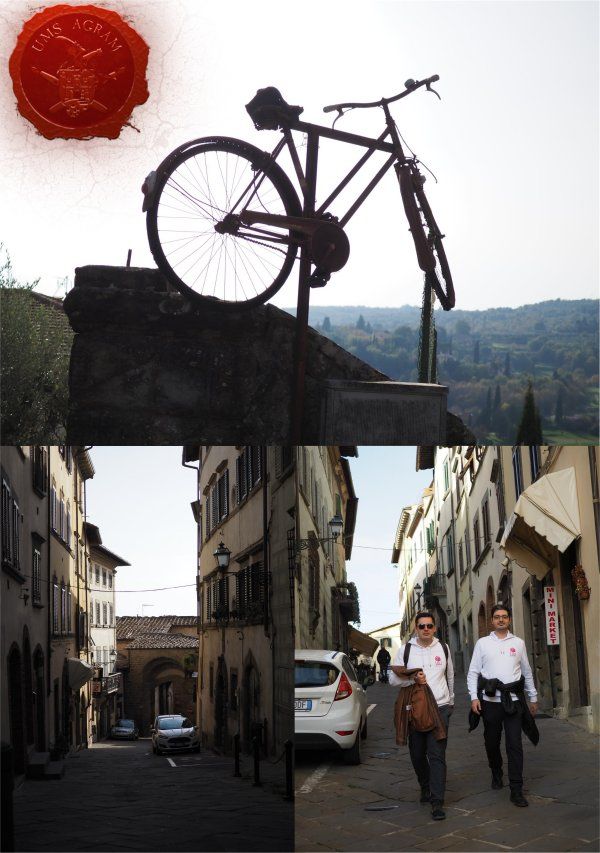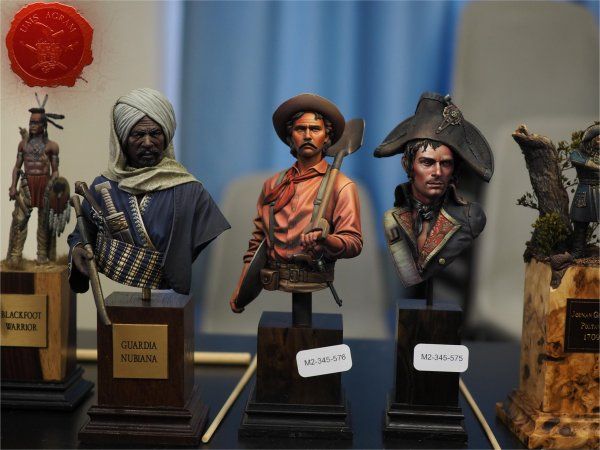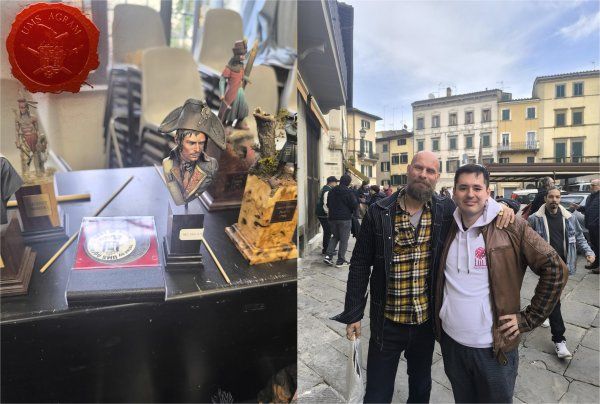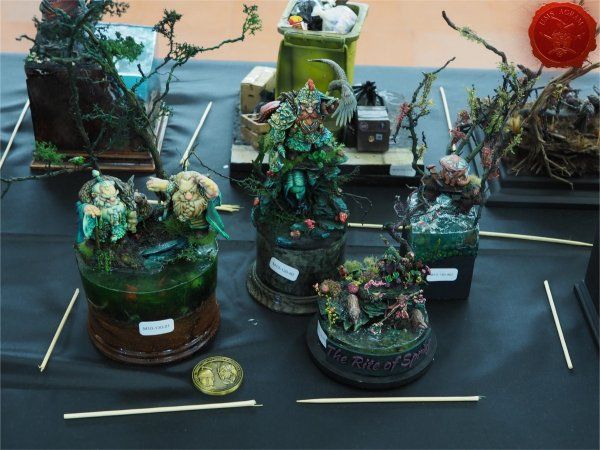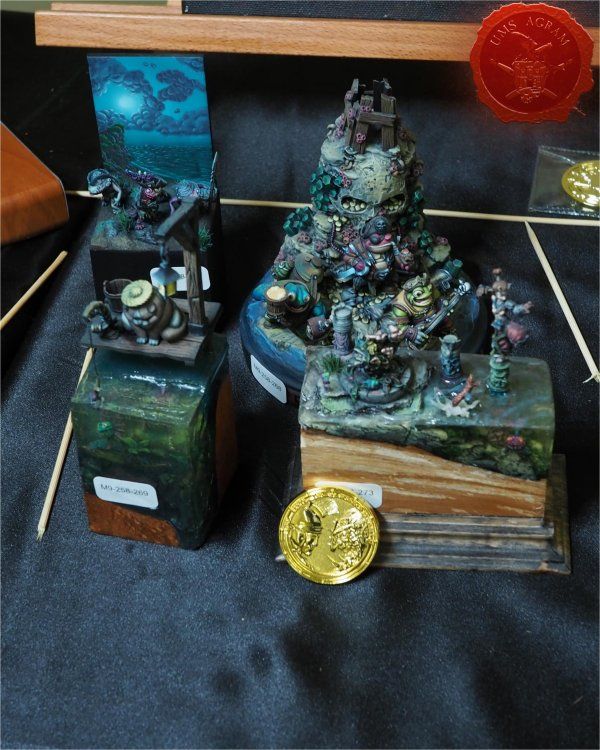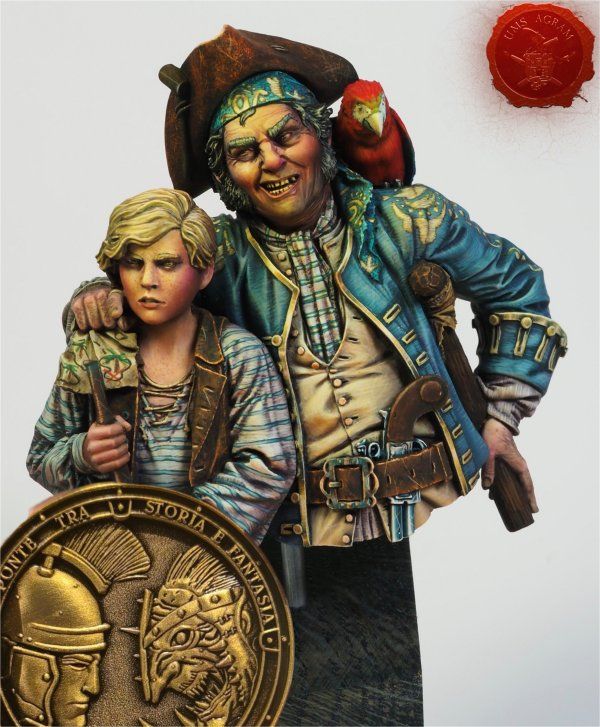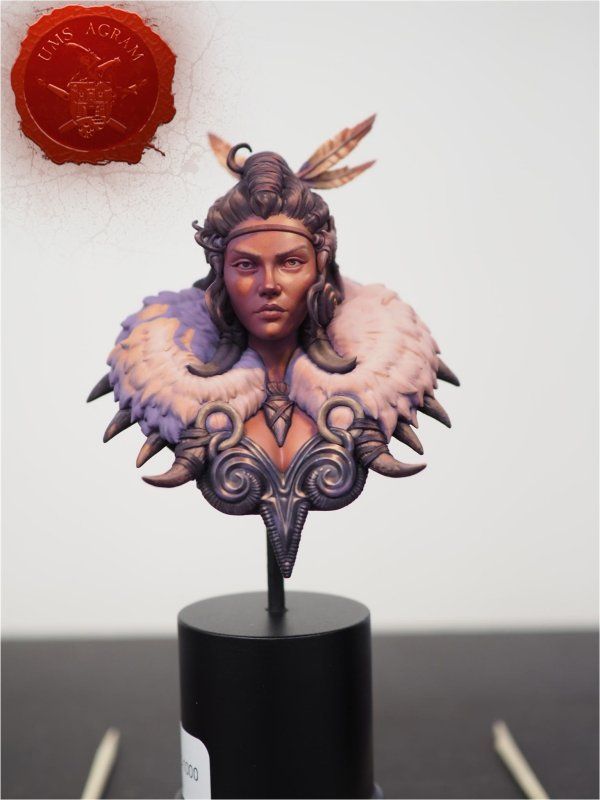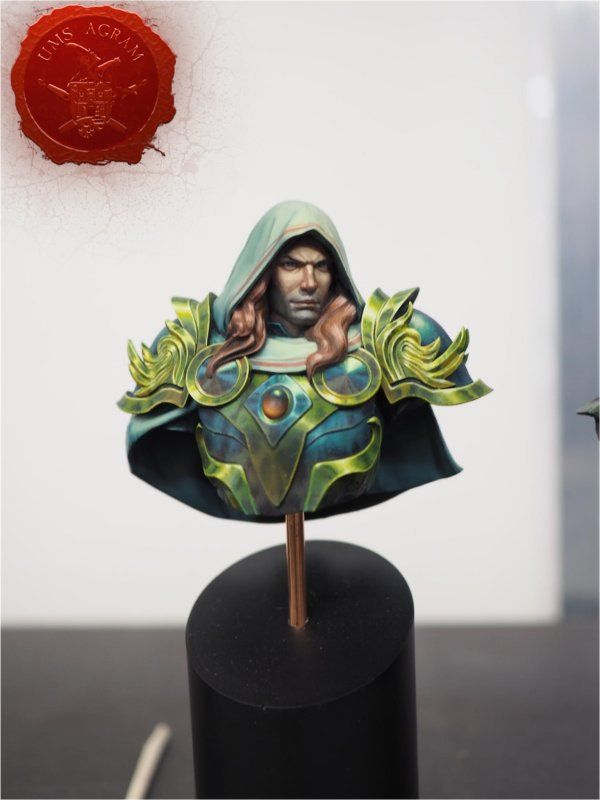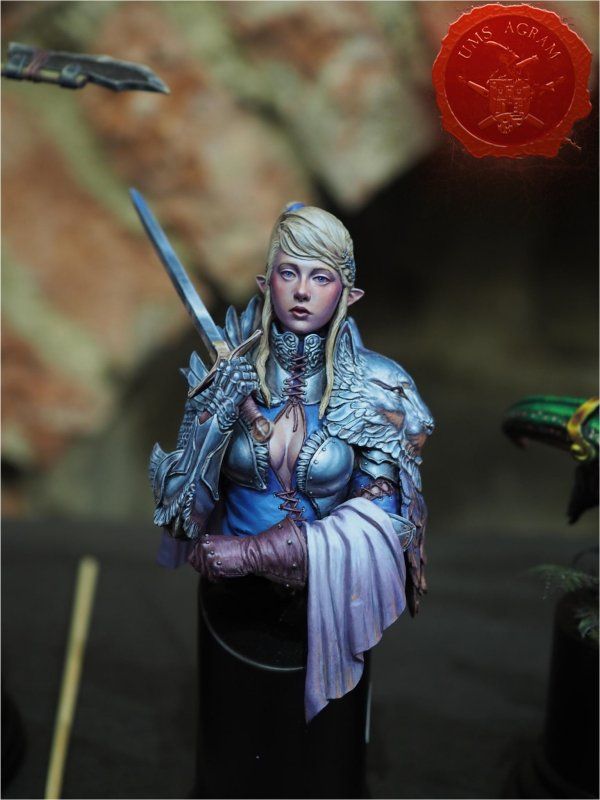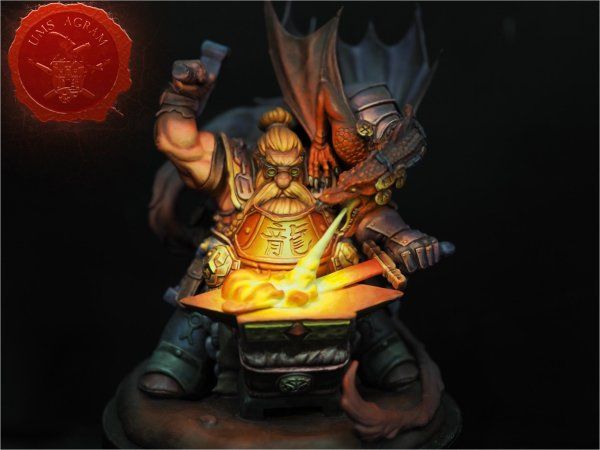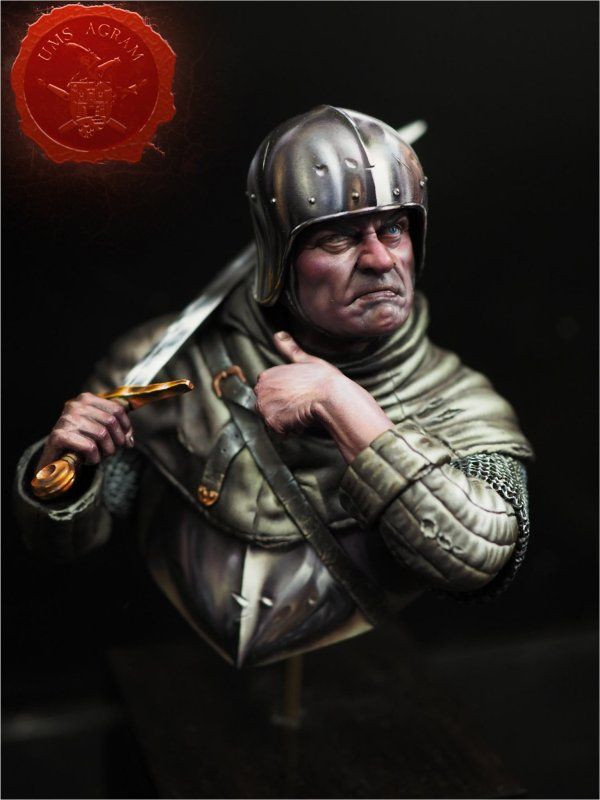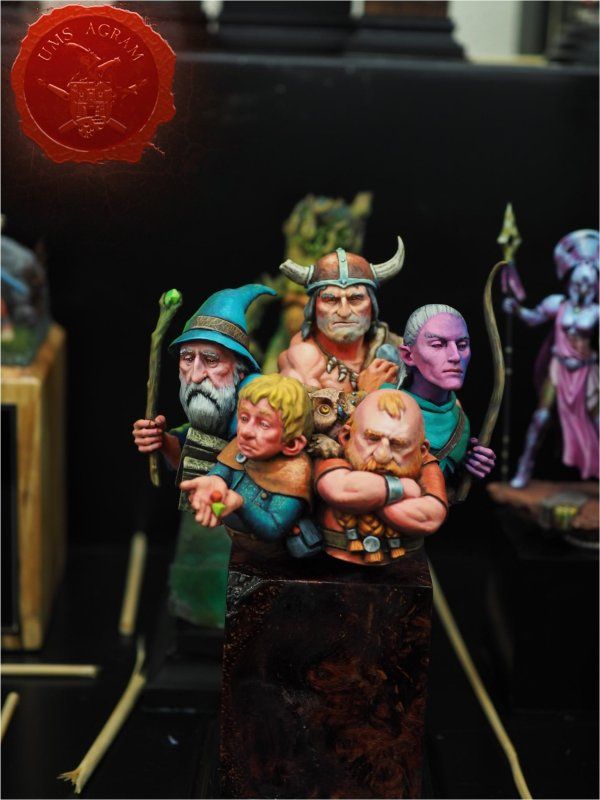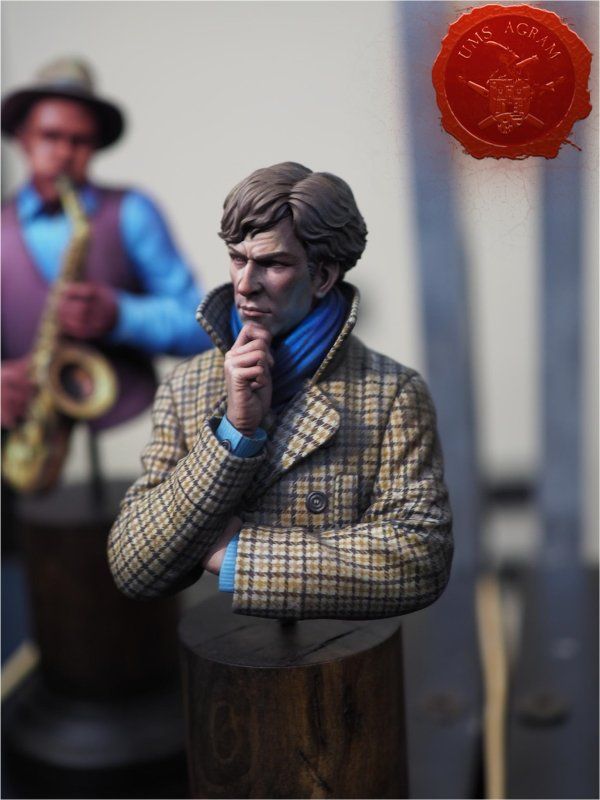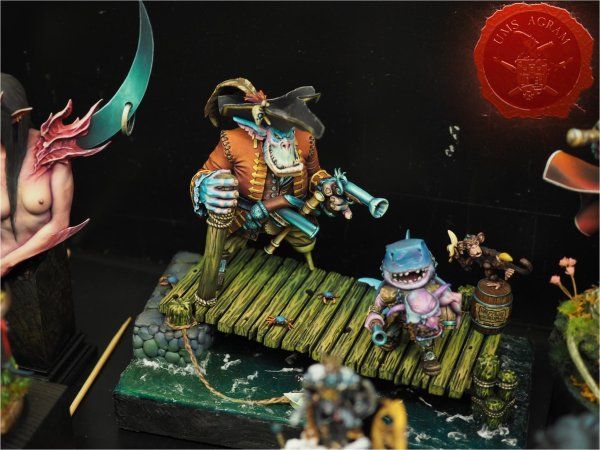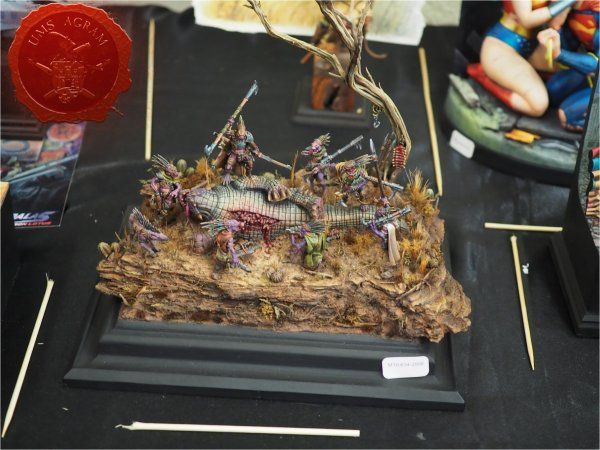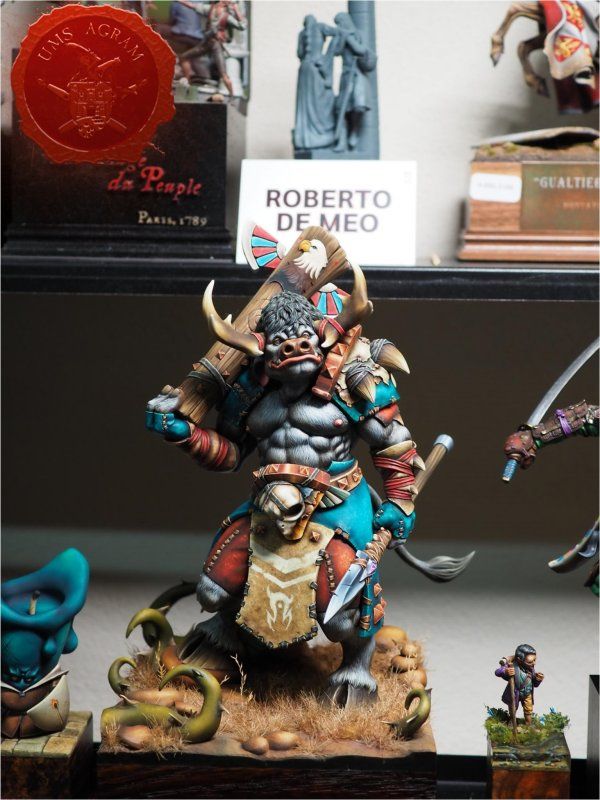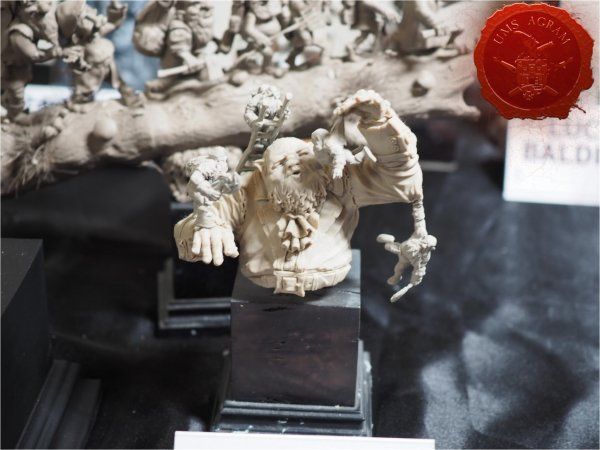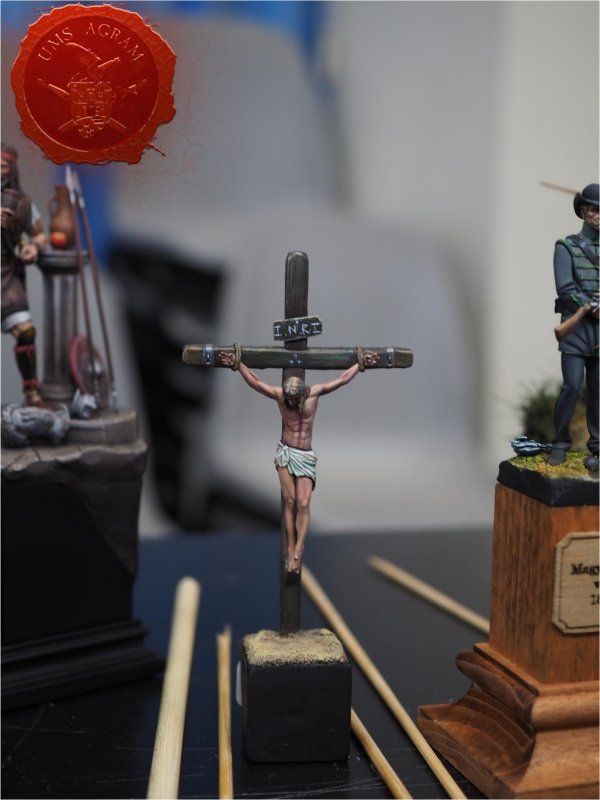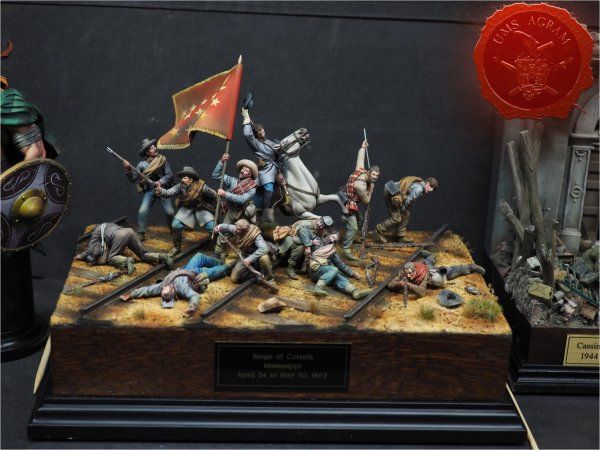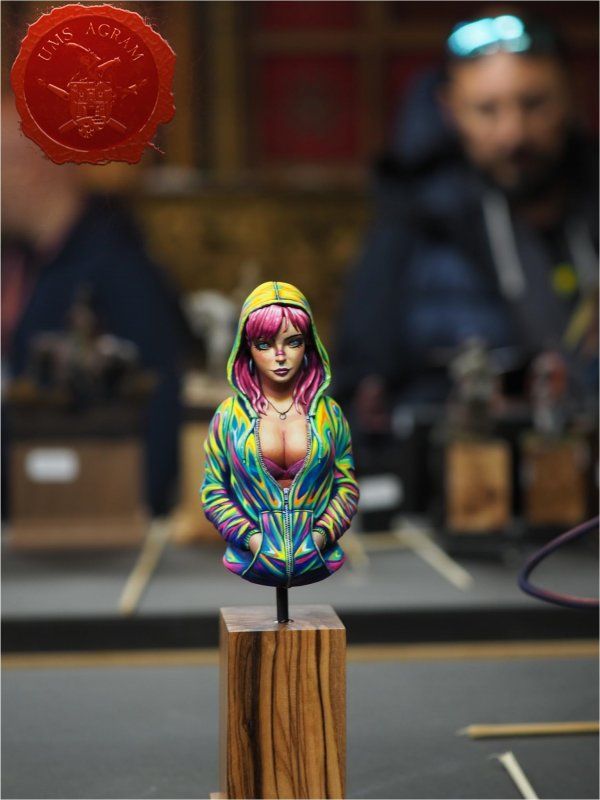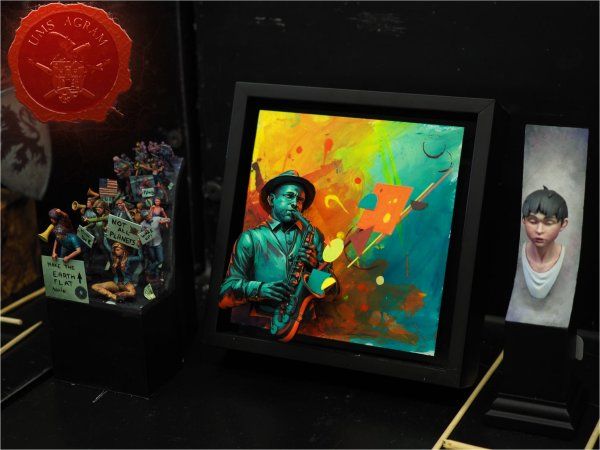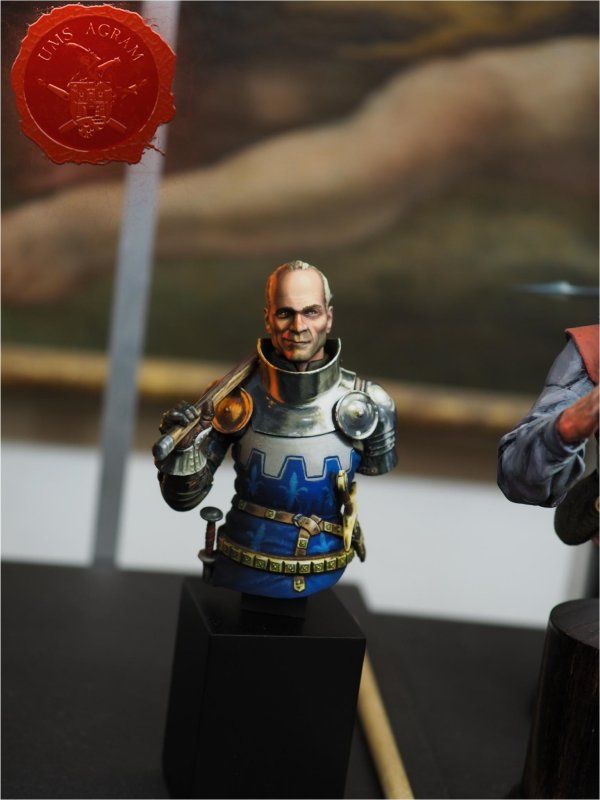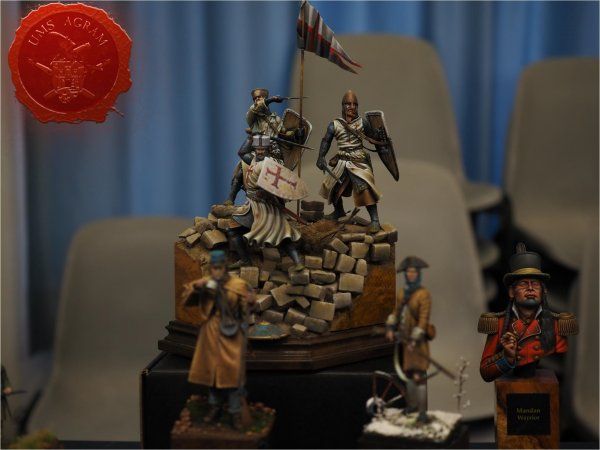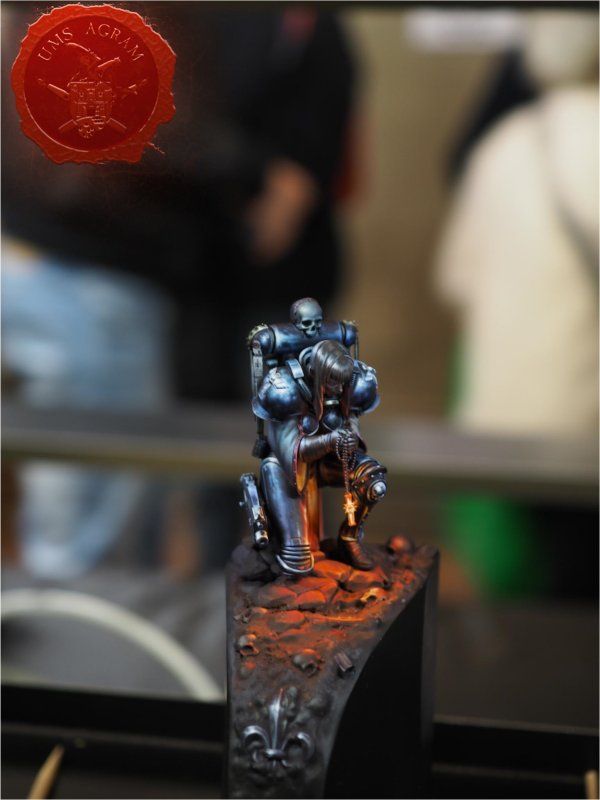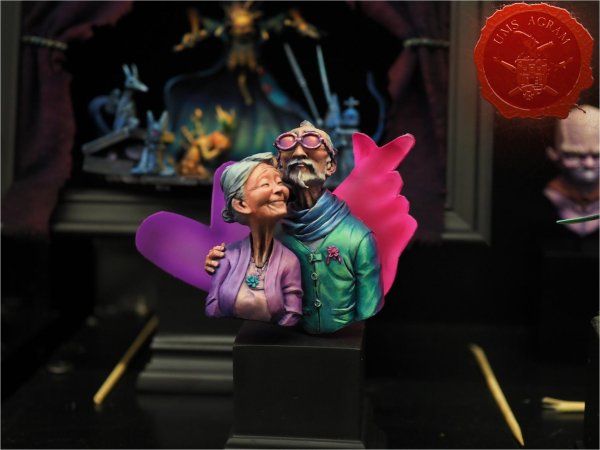RISE - the Necromancer project
For a while I had this Ossiarch Bonereapers miniature, Mortisan Boneshaper, from Age of Sigmar, in my collection of gray plastic, not really knowing what to do with it. I liked the model, bought it to support a local hobby store I visited, but didn’t find any inspiration for it.
Until one day I saw a few kits at Carta Magica and my head started spinning around a new diorama idea - a Necromancer raising undead warriors from their graves. One of these kits was gravestone bits from Green Stuff World, the other was this Spirit Hosts kit, where I suddenly noticed the very fitting skeletons at the base that I never saw before. They were perfect for my idea.
I started by getting rid of all the spikes on the Boneshaper, as they’re too silly, big and unnecessary for my taste. I cut them off with my hobby knife and covered up the space this left with some brown stuff. I also covered up the very “warhammer-y”, fancy pattern on middle part of his armor, with brown stuff as well.
For the base, I started with a piece of XPS foam cut to the same size as the wooden plinth I knew I wanted to display it on. I superglued several pieces of bark on one side of the base, to elevate the area where my Mortisan Boneshaper, the focal point of the diorama, would be placed. I also mixed superglue with baking soda to create some textures here as well. Then I covered the bark and all the XPS foam with cheap, air-hardening modeling clay from DAS. At this point I also test-fitted all my elements - the graves, the skeletons and some small branches that would eventually serve as streaks of energy (I didn’t know that yet at this point). And I pushed the base of the Mortisan Boneshaper into the clay before it had hardened to make sure it will fit in the future (although I didn’t consider how much this kind of clay shrinks when it dries, so I eventually had to cut out more clay to make the base fit).
The next step was to blend the graves and skeletons into the rest of the landscape. For this I found that Standard Milliput is perfect. It’s easy to work with and shape, it doesn’t stick as much as brown or green stuff, and only requires a little water to blend it into the landscape.
My painting plan for this diorama and the miniature, was to work with contrast paints and enamel washes, something I don’t do often, so it would serve as practice. For this reason, I zenithal primed both diorama and miniature, and then covered them in contrast colours. On the diorama, to get a lot of variation in colour tones, I used five different contrast colours, as I knew the later stage of drybrushing would bring them all together. I used warm colour tones for the rocks, landscape and skeletons - red, yellow, warm brown and green - while covering the gravestones in a colder blue colour (I like Citadel Contrast colour Gryph-Charger Grey a lot, as it is subtle, but gives a cold tint). Then I drybrushed everything with several lighter, neutral greys and browns.
I was happy with how varied in colour the landscape looked after this, but as I had already decided on Streaking Grime enamel as the wash for the whole project, because of a successful test on a General Grievous mini earlier, I went ahead and covered everything in the enamel wash, waited for 15 minutes and began the laborious process of cleaning off most of it with make-up removal brushes from DM that I’ve grown quite fond of (they don’t leave cotton hairs as Q-tips do) and paper towels. On the miniature I was pleased with the result, as the Streaking Grime dirtied down the very flashy yellow colour on the dress, and gave an interesting worn feeling to the bones. Just as my Grievous test had showed me. But as I had never tested this technique on landscapes before, I made a miscalculation. In hindsight I would have left if without the wash, as the contrast colours had already added a nice contrast (duh?) to the diorama. Since the landscape had a lot of tiny textures, from the bark, superglue and baking soda, the enamel wash got stuck deep within the small crevices, and were impossible to get off. This left we with a darker, dirtier, less varied landscape than I wanted, and I took me a long time, and lots of boring steps I won’t get into here, to get some colour variation and interesting tones back into the diorama.
After highlighting the mini, the skeletons and the graves, it was time to tackle the energy streaks. What was first supposed to be regular branches, I decided to give a strong colour, pretend that they were streaks of energy coming up from the ground all around the Boneshaper as he’s doing his necromancy thing. I had several reasons for deciding on this - 1. the flashy, turquoise colour of the effect would add some nice colour back into a very brown diorama, 2. I hoped the energy streaks would add some dynamism and movement to the diorama, as well as help tell the story better and 3. it would give me a chance to add some subtle OSL in the project. I took inspiration from this artwork I found of the Mortisan Boneshaper.
So I base coloured the energy streaks with white. Then covered them all in two layers of the Citadel Technical paint Nihilakh Oxide.
Next step was again a Citadel Contrast paint, as this was my go to for the entire project. The one called Aeldari Emerald has a very strong, dark turquoise tone, and only needs one layer to cover anything light enough. So I gave the streaks a coat of this, and then proceeded to drybrush Celestra Grey and Ulthuan Grey in several layers on the streaks, and also on the ground around the streaks. Then another coat of Aeldari Emerald, with a watered down mix used to cover the ground around the streaks for the OSL. Then more drysbrushing, then back to some Nihilakh Oxide to bring in some more midtone again, as the darkness of the Aeldari Emerald became my shadow color, the Ulthuan Grey the brightest highlight, and so the Nihilakh Oxide became the midtone. I repeated these steps until I was happy with the outcome, as well as adding a Spirit Host painted in the same scheme. This was originally just a test model for the colour scheme, but it eventually found its way into the diorama.
At this point I was quite happy with the diorama, but felt like something was missing. Some colour in the brown, dirt ground was still lacking, and since it’s a rather large diorama, I wanted to pack it with as much story as possible. I had recently bought some 3D printed spiders from Green Stuff World, and had the idea to paint them quite colourful, as well as have them running towards the necromancer, solving both problems; they would give some more colour to the ground, and help sell the “story” that the Boneshaper is controlling so much energy in this necromancy ritual, that all the spiders in the area are attracted to him. I found a picture of different spiders online, and decided on the one on the bottom line, second from left, as I thought the colour would complement the diorama nicely.
So after about a month of on-and-off work on the diorama, I had this result:
Latest articles
- We visited: Kup Zagreb 2025 Krunoslav Belinić, 10th December 2025
- We visited: Museum Slovenia v Malem and Back to Basics in the Kovačnica incubator in Kranj Marko Paunović, 9th December 2025
- We attended: Slovenian State Championship in plastic modelling, Ljubljana 22.11.2025. Krunoslav Belinić, 9th December 2025
- Back to Basics Workshops in Galerija VN, a part of Libraries of Zagreb Krunoslav Belinić, 4th December 2025
- We attended: Monte San Savino 2025 Marko Paunović, 24th November 2025
Latest battle-reports
- Kill Team - Blooded vs. Vespid Stingwings 28th February 2025, GW - Warhammer 40.000, and Antoni Pastuović (Imperial Guard)
- 22nd April 2022, GW - Warhammer 40.000, Borna Pleše (Space Marines) and Kristijan Kliska (Tau Empire)
- 17th November 2021, GW - Warhammer 40.000, and Nino Marasović (Space Marines)

